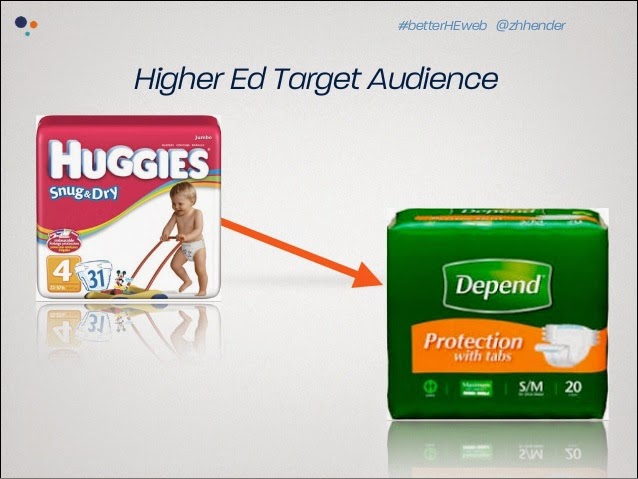If you send a lot of calendar invitations, especially for events with a lot of attendees, you may get tired of deleting the emails you get back when someone responds to your meeting invitation.
It's fairly easy to set up a filter in Gmail that will take those response emails out of your inbox, or delete them altogether.
Chris Hughes - Promoting Technological Literacy at Spring Hill College
Wednesday, April 30, 2014
Friday, April 25, 2014
What the heck are Labels in Gmail and why should I care?
"Labels" in Gmail. Gmail users love 'em, Outlook users hate 'em, at least at first.
The great thing about labels is you can use them exactly like folders, but why would you want to? Labels are much more flexible and offer some distinct advantages to the antiquated notion of folders.
The great thing about labels is you can use them exactly like folders, but why would you want to? Labels are much more flexible and offer some distinct advantages to the antiquated notion of folders.
Wednesday, April 23, 2014
How to Build a Better College Website
How to Build a Better College Website Webinar
Presented by Zac Henderson, VisionPoint Marketing
Thursday, February 6, 2014 1:00 PM ESThttps://www1.gotomeeting.com/join/698505593/106658753
 This webinar was geared toward higher education Web professionals, which is obviously why I thought it would be worth spending an hour on, but I think a shorter version of this webinar should be required viewing for anyone with any stake in a college's Web presence.
This webinar was geared toward higher education Web professionals, which is obviously why I thought it would be worth spending an hour on, but I think a shorter version of this webinar should be required viewing for anyone with any stake in a college's Web presence.The webinar did an excellent job of encapsulating the process of re-thinking, redesigning, and rebuilding a college Website. The process is much more complex and time consuming than most people realize, and this brief overview helped to express that complexity and provide a rationale for why and how design decisions are made.
The content was broken down into three main topics:
Defining Goals
Understanding who you are, where you are, and where you want to be. Develop an understanding of who your audience is and why they visit your site.Information Architecture
Developing a user-centric content flow is difficult and frequently hard to sell to executives, but an intuitive, plain-language approach to content and navigation is critical to the success of a site.Technology Decisions
Choosing the appropriate CMS from hundreds of options is a daunting task, especially with the complexity of modern data structures and the desire for normalized data and intrconnected tools.
 Visual Design
Visual Design
This one is simple, design for your audience, not your fifty-something administrators. This means exhibiting authenticity and understanding the Web is no longer bound to the desktop.Web Governance
Policy and procedure is getting more important as Websites grow and evolve. More users are contributing more content to more pages on your site, and someone has to keep it under control. This is explained nicely with the 5 Rs... Roles, Responsibilities, Relationships, Rules, and Review.Overall, this was a fantastic webinar. The information was excellent, timely, and very well explained. The presenter did a great job of pacing the content to fit within the time constraints, and still took time for some questions. Audio and video quality was very good, though the sound was a little thin the first few minutes. This small issue did nothing to detract from the overall quality of the webinar.
The slides from the webinar are available for review at http://www.slideshare.net/Percussion/how-to-build-a-better-college-website
Here are a couple of questions to consider about the topics covered in the webinar.
How important is it for a college to implement a Web design that works consistently on both desktop and mobile devices?Do you think formal policies and procedures for Web content is important for a college? Why?
Wednesday, April 2, 2014
Simple Peer Review with Google Docs
I needed a simple peer review process that did not involve the problems associated with passing a document around through email, but was simple enough that it could be used immediately without any additional software or end-user training.
I came up with a simple peer review header that I could embed in a Google Doc. The header contains three things:
- Some metadata about the usage and purpose of the content
- A two-sentence user's guide
- A sign-off area
I drop this header on top of any content for which I would like to gather feedback and approval and then share it with my peer group in read-only mode. Users can use chat to discuss changes between themselves or with me, and suggest improvements with the comment feature. Once the review process is complete, users "sign-off" on the document by commenting by their name on the Approval list. It's dead simple and users have responded well to the process.
Since comments and chat are saved with the document, I have a trail of the whole discussion and approval process. One day when I'm feeling really brave, I'll open the content up for editing by the whole group. Google Docs is pretty good about tracking changes to the document, so this may not be as dangerous as it seems. I'll let you know how it goes.
This is very simple to do yourself, but if you want a jumpstart, copy my sample peer review header here.
How are you using Google Apps in interesting collaborative ways? Let me know in the comments.
Subscribe to:
Comments (Atom)
